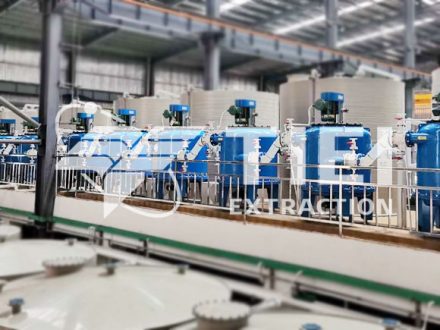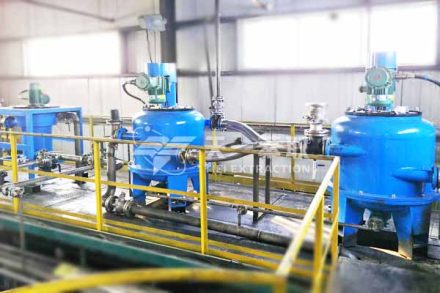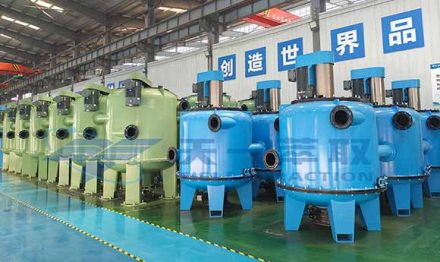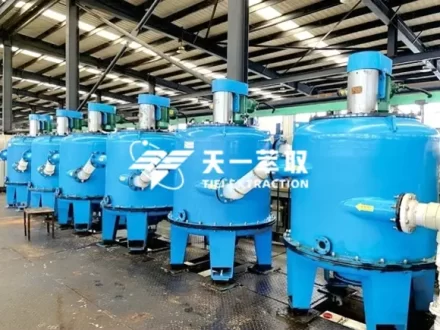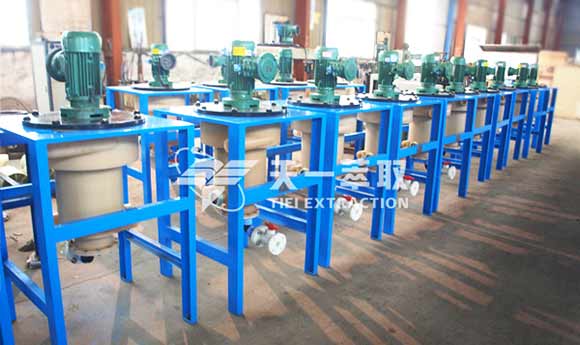
In the production process of chemical enterprises engaged in stainless steel processing, acids are used for surface treatment, which generates a large amount of pickling leachate containing heavy metal elements such as chromium, nickel, and iron. If these metals can be extracted and recovered for reuse, it enables secondary utilization of resources. Currently, the main method for treating stainless steel pickling leachate is solvent extraction, which separates and recovers the metal elements contained within.
For the extraction of metal elements from leachate, based on relevant case data, di(2-ethylhexyl) phosphoric acid (P204) can be selected as the extractant. P204 is a commonly used reagent for metal extraction, known for its excellent extraction performance. In terms of equipment selection, a multi-stage continuous centrifugal extractor is typically used for solvent extraction to separate heavy metal elements from the sulfuric acid leachate of stainless steel pickling sludge, thereby achieving waste recycling and resource recovery.
P204 is an acidic phosphorus-based extractant that exists in nonpolar solvents as a dimer, (HA)₂. During extraction, metal ions enter the organic phase in the form of complexes. When extracting metal elements from stainless steel pickling leachate, it is first necessary to adjust the pH of the feed solution. Then, the P204 extractant and the leachate are injected into the centrifugal extractor at a specific phase ratio. The centrifugal extractor operates based on centrifugal force, rapidly rotating to transfer the metal elements from the leachate into the extractant. The two phases are then separated, achieving the extraction process.
After extraction, the metal elements are transferred into the extractant, followed by a stripping process using a stripping agent. Centrifugal extractor is also used in this stage to separate the extractant from the metal elements, thereby obtaining the desired metals while allowing the extractant to be regenerated and reused.
If P204 is the precise “catcher,” then the centrifugal extractor is the powerful and swift “separation engine.” It perfectly addresses the many pain points of traditional mixer-settlers in handling pickling solutions:
- Efficient mass transfer and rapid reaction
The intense centrifugal force generated by high-speed rotation allows the aqueous phase and the organic phase to mix and transfer mass thoroughly within an extremely short time. The reaction efficiency is several orders of magnitude higher than that of traditional equipment, achieving exceptionally high single-stage extraction efficiency. - Clear phase separation without entrainment
Centrifugal force instantly completes phase separation, completely resolving the “difficult phase separation” issues caused by emulsification or small density differences. This prevents cross-phase entrainment, ensuring product purity and effective recovery of the organic phase. - Short residence time
Ideally suited for processing highly corrosive media such as pickling solutions, it significantly reduces the risk of equipment corrosion and extends service life. - Continuous and automated operation
With fully enclosed, continuous feeding and discharge, the system is easy to integrate into automated production lines. It requires minimal floor space and human intervention, offering stable and reliable operation.
The liquid–liquid extraction equipment developed and manufactured by Zhengzhou Tiei Extraction is primarily used for the extraction and separation of two immiscible liquid phases. When selecting a centrifugal extractor, customers need to choose the appropriate model based on the specific liquid system and processing capacity. If the parameters are not yet clear, it is recommended to first conduct a laboratory-scale test using an experimental centrifugal extractor. After obtaining the experimental data, the industrial equipment can be selected accordingly.
For specific consultation and equipment selection, please contact Tiei Extraction.
Email: sales@tieiextraction.com
Whatsapp: +86 19069612820


